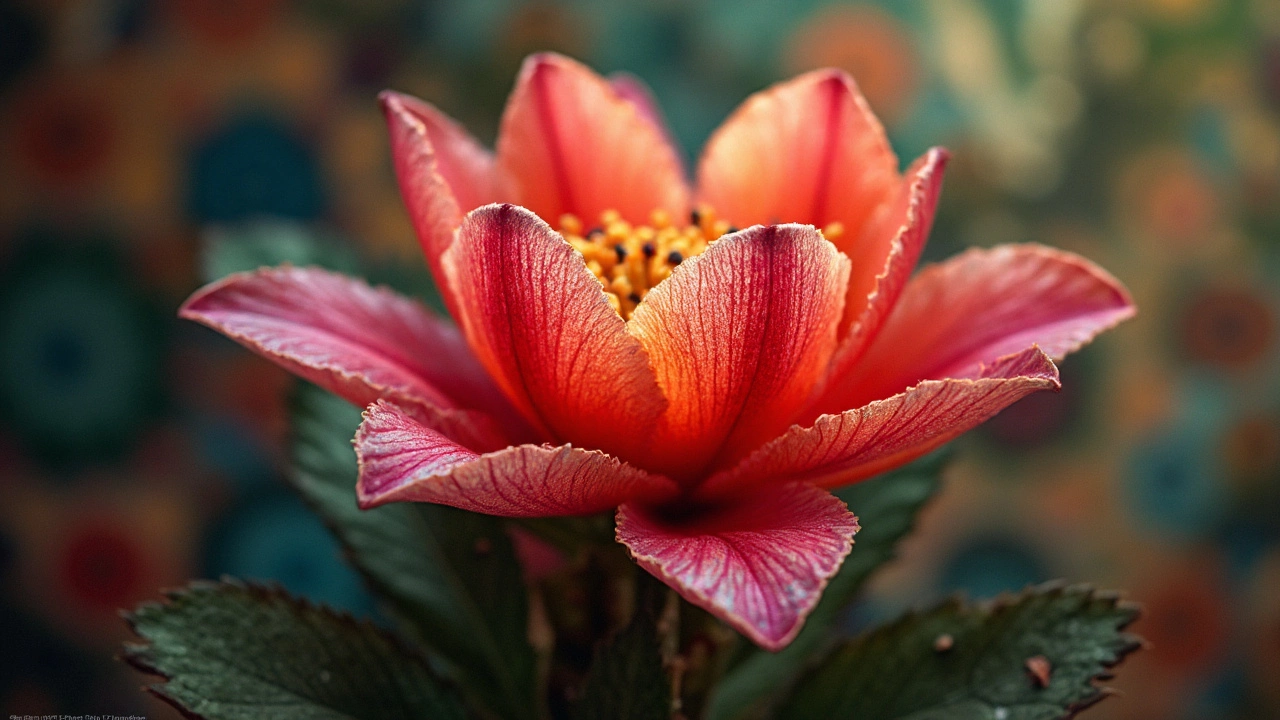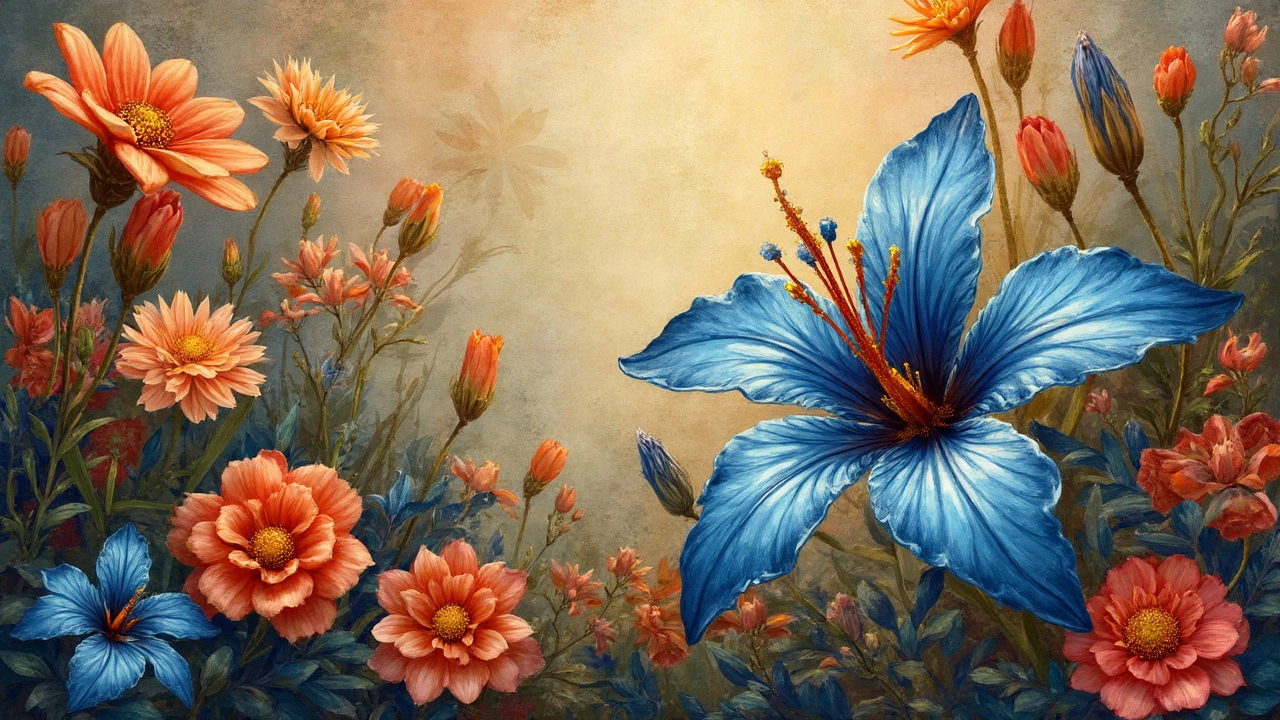Ever stumbled upon a flower so rare that it's almost like spotting a shooting star? Meet the Middlemist Red, often hailed as the rarest flower in the world. Believe it or not, there are only two known to exist today—one in the UK and another in New Zealand. Sounds like a tale from a fantasy novel, right?
But here's a question: how did such a beautiful bloom become so scarce? In the bustling world of gardening, rare flowers are like hidden treasures, often limited by habitat, climate changes, and human impact. The Middlemist Red was whisked away from its native China in the early 1800s and since then, it has struggled to leave its mark.
If you're in India, dreaming of adding exotic blooms to your collection isn't a lost cause. While the Middlemist is tough to come by, there are plenty of intriguing alternatives. Imagine the challenge (and triumph!) of nurturing a unique flower right in your own garden. But let's face it, growing these marvels is no walk in the park; each has its quirks and care requirements, and some need more TLC than your grandma's old roses.
- The Mysterious Middlemist Red
- Where to Find These Rare Blooms
- Why Are Some Flowers So Rare?
- The Challenge of Growing Rare Flowers
- Tips for Growing Exotic Flowers in India
- Preserving Rare Flowers for Future Generations
The Mysterious Middlemist Red
Ever heard of the Middlemist Red? It's like the unicorn of the flower world—mysterious and incredibly rare. Named after John Middlemist, a nursery owner who brought it from China to Britain in 1804, this flower is now almost extinct in its native land. Today, you can only find it in two places: a greenhouse in the UK and a garden in New Zealand. Kind of makes you want to fly halfway across the world just to see it, right?
The rarest flower stands out with its vivid pink blooms, which might get you thinking it's, well, red. This camellia species isn't often seen even among gardening enthusiasts, thanks to its challenging propagation. Imagine trying to convince a stubborn kid to eat their veggies—that's what it's like trying to grow a Middlemist Red in your backyard.
Why is it so rare? Part of it is due to its limited reproduction outside its natural habitat. Plus, early botanical activities often involved taking specimens without focusing on sustainability. Fortunately, efforts are underway to conserve these botanical treasures. Modern technology like controlled pollination might just help us see more of these beautiful blooms in the future.
For anyone dreaming of a flower gardening adventure in India, finding something as rare as the Middlemist might seem daunting. But, think of it as mastering a skill. Start small, maybe with other exotic plants, and who knows? One day you might just have a rare gem like the Middlemist in your own garden.
Where to Find These Rare Blooms
Tracking down the rarest flower in the world, like the Middlemist Red, feels like going on a treasure hunt across the globe. These rare beauties often thrive in specific corners of the world and require just the right conditions to bloom.
For the Middlemist Red, its journey begins in China, where it originated before being transported by plant enthusiasts centuries ago. Now, you can find this elusive flower blooming in just two places. One is Chiswick House Gardens in London, a spot lovingly maintained to showcase its spectacular bloom. The other home to this rare flower is a private garden in New Zealand, a testament to its global journey.
If you're curious about other rare flowers, consider checking out botanical gardens. Many of these gardens partner with conservation programs to grow and display endangered species. They're like living museums, offering a peek into the world's botanical wonders! In India, some botanical gardens and specialized nurseries might have information or even small collections of exotic species.
Keep in mind, some rare blooms are found in the wild but are not meant to be taken home. Protecting their natural habitat is crucial to their survival, so these flowers can thrive in their organic settings.
Botanic gardens often work with groups focused on conservation, allowing enthusiasts to appreciate rare plants responsibly. If you're digging deeper into exotic plant life, these gardens can be your first stop for inspiration and knowledge.
Why Are Some Flowers So Rare?
Ever wonder why certain flowers are practically unicorns in the plant world? It all boils down to a mix of factors, really. Initially, it's about the environment. Some flowers naturally grow only in specific regions where the climate is just right, sort of like how you can't rock a winter coat in the tropics. Specific temperature, soil type, and even altitude play a huge role in their survival.
Human activity can't be left out of the equation either. As urban areas expand, natural habitats shrink, leaving rare flowers without a home. The Middlemist Red, for example, was plucked from China over two centuries ago and, now, is found only in two locations worldwide. Habitat destruction is one tall hurdle these rarest flower species face.
Another thing to consider is their pollination process. Some rare flowers rely on very specific insects or birds to spread their pollen. If those creatures don't show up for work, the flower's chances of survival drop like a rock. Climate change also throws another wrench in the works, disrupting blooming cycles and leaving these flowers out of sync with their pollinators.
And let's not forget the role of collectors. Who wouldn't want a rare bloom in their backyard? But over-collection can push these beautiful, exotic plants closer to extinction. So while having a piece of nature's wonder might be tempting, it’s essential to think about the impact on these fragile species.
In this wild world of rarity, the magic of these flowers lies as much in their scarcity as in their bloom. These plants are delicate pieces of our natural heritage, and they need a little help from us to stick around.

The Challenge of Growing Rare Flowers
Growing rarest flowers like the Middlemist Red or similar exotic blooms isn't some weekend hobby you can just dive into. These beauties demand a whole lot of patience and know-how. Let's face it, we're not just talking about planting a seed and hoping for the best.
First off, understanding the natural habitat of these rare flowers is key. Many of them have specific soil, climate, and light requirements that you need to mimic at home. In countries like India, where the climate can be quite varied, this is often a major hurdle.
Here are some common challenges gardeners face when trying to cultivate rare flowers:
- Soil Composition: Many rare flowers need particular soil types—whether it's acidic, well-drained, or loaded with organic matter. Getting the mix right is crucial.
- Climate Control: Some flowers flourish in cooler temperatures, while others crave humidity. Controlling these factors in a garden setting, especially outdoors, can be tricky.
- Pest Management: Exotic flowers are sometimes more prone to pests. Finding environmentally friendly solutions to protect your precious plants is a must.
- Watering Needs: Overwatering or underwatering can spell doom. Knowing the exact requirement helps in nurturing these flowers correctly.
But don’t lose heart! With the right strategies, these challenges can be tackled. It’s all about research, preparation, and learning from fellow gardeners who’ve walked this path. Plus, proper attention and dedication can make growing these rare flowers in your garden in India rewarding and enriching.
Why not start a rare-flower community group? Sharing tips, seeds, and stories with others can make the journey less daunting and far more enjoyable.
Tips for Growing Exotic Flowers in India
If you're looking to add a touch of the extraordinary to your garden, exotic flowers might be your perfect pick! When it comes to growing these botanical gems in India, a bit of guidance can go a long way.
Climate and Soil are key. Many exotic flowers are sensitive to temperature and soil conditions. Knowing your region's climate can help you choose the right bloom that thrives in your area. Most exotic flowers prefer well-draining soil, so mixing sand with your garden soil might do the trick.
- Choose the Right Flowers: Opt for flowers that are known to grow well in Indian climates, like orchids or anthuriums.
- Watering: While you're excited about these beauties, don't overwater! Exotic blooms often need less water than native varieties.
- Pest Control: Keep an eye out for insects. Neem oil can be a lifesaver without harming the plant or the environment.
- Sunlight Needs: Some exotics crave sunlight, while others might wither in too much heat. Placing them in partial shade could be a smart move.
As a fun fact, India sees a wide range of climates, from the snow-covered peaks of the Himalayas to the tropical warmth of Kerala. This diversity can be a boon for cultivators willing to experiment. But remember, patience is your best friend when growing exotic flowers. They might take time to adjust, but the reward of having a garden full of rare blooms is worth the wait!
Here's a quick look at recommended growing temperatures for some popular exotic flowers:
| Flower | Ideal Temperature |
|---|---|
| Orchid | 15-30°C |
| Anthurium | 18-28°C |
| Lotus | 25-35°C |
With these practical tips, growing exotic flowers in your Indian garden becomes less of a challenge and more of a delightful journey. So, roll up those sleeves and get planting!
Preserving Rare Flowers for Future Generations
Preserving rare flowers like the Middlemist Red isn't just about gardening; it's like saving a piece of natural history. Rare flowers are often victims of habitat loss, climate change, and over-collection, making conservation efforts even more important. So, how do we ensure these floral treasures don't fade into oblivion?
First off, supporting botanical gardens and conservation programs is critical. These institutions work tirelessly to cultivate and study rare flowers, often sharing seeds and cuttings to create backup populations. In India, getting involved with local groups focused on plant conservation in unique ecosystems can play a big role in preservation efforts.
For home gardeners keen on rare bloom conservation, there are a few guiding steps:
- Research Conservation Status: Know the rarity and protection status of a plant before attempting to cultivate it. Some may be protected by law.
- Use Ethical Suppliers: Acquire seeds or plants from reputable, ethical sources to prevent harm to wild populations.
- Master Propagation Techniques: Learn the specific needs of rare flowers for successful growth and multiplication, ensuring they thrive under your care.
- Document and Share Knowledge: Keep track of growth methods and outcomes, and share this valuable information with horti-culture enthusiasts and experts alike.
Interestingly, technology plays a big part in protecting these floral rarities. DNA barcoding helps in identifying and protecting diverse species. In some top Indian gardens, satellite imagery monitors ecological changes that may threaten rare species.
Ensuring these rare flowers don't disappear depends on collective action, combining grassroots initiatives with cutting-edge science. This way, future generations can also admire and enjoy these natural wonders.




